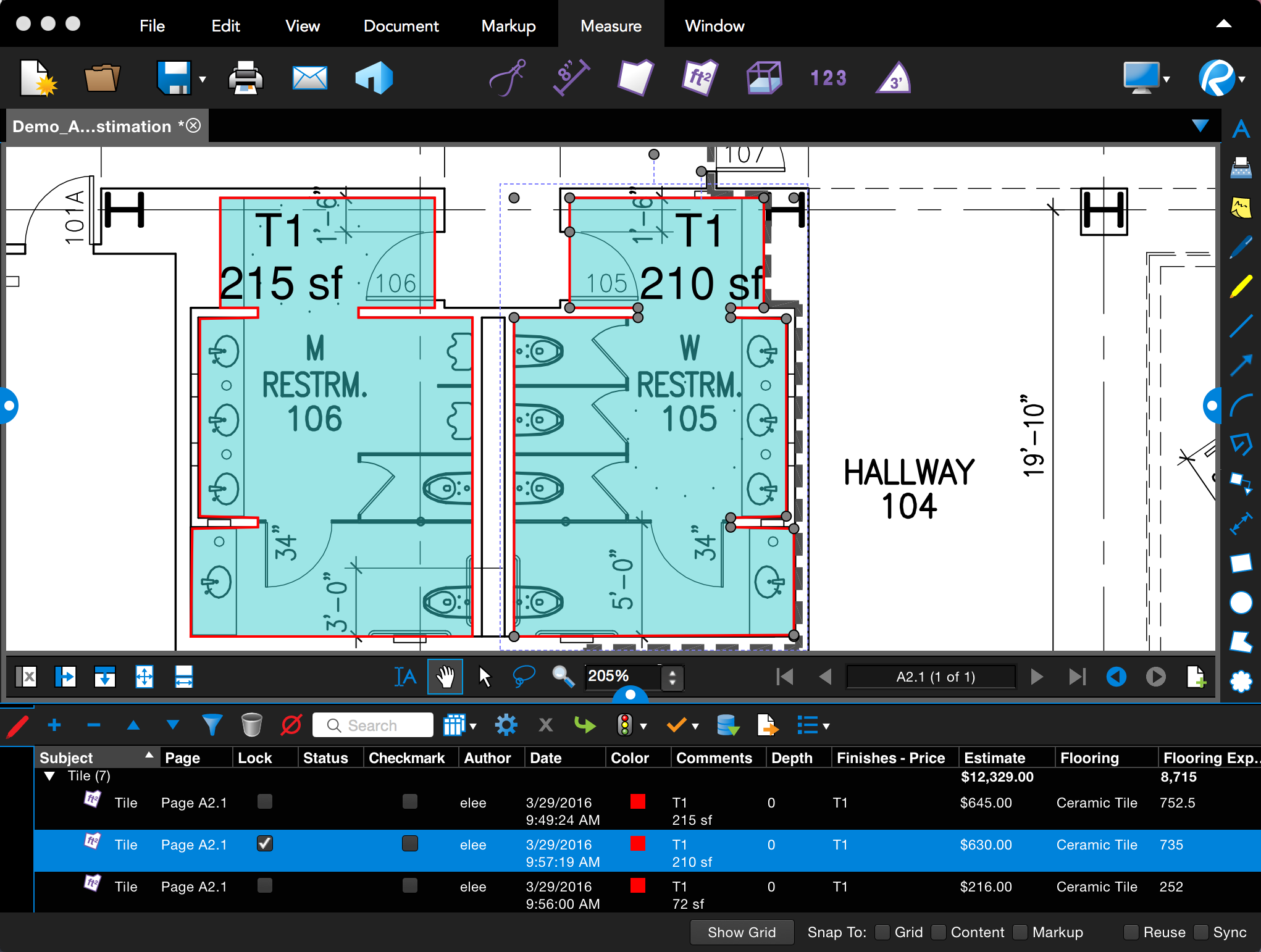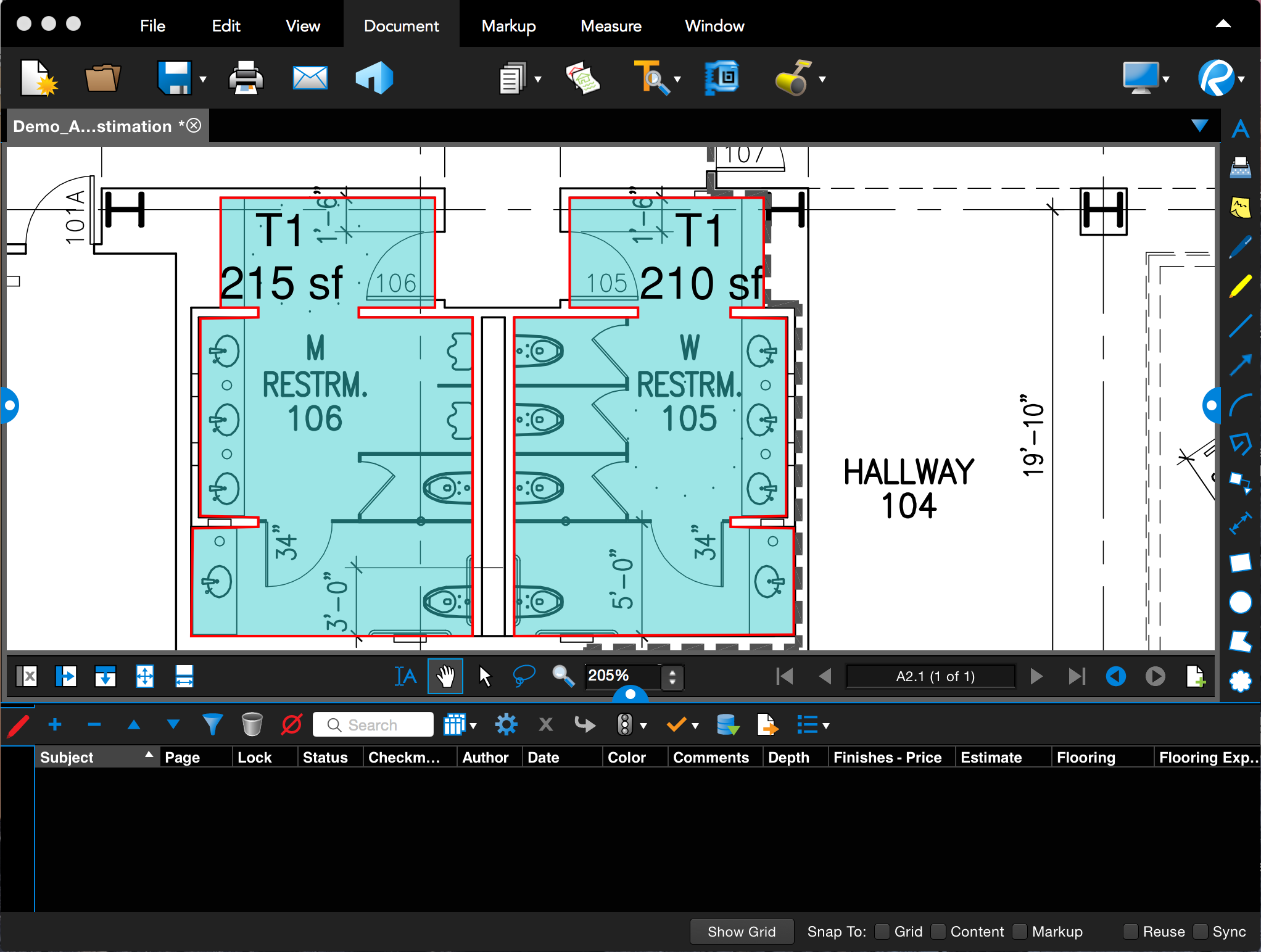Applies to:
- Revu for Mac 1
Revu for Mac lets you either lock or flatten markups to prevent them from being accidentally moved or edited, but how do you know which one to use, and why?
The answer lies in what you’re trying to achieve: Are you trying to turn the markups into a permanent part of the document content that can never be edited? Or, do you simply want to keep them from being unintentionally modified or deleted?
To further help you make the decision about what to use and when, let’s first go over the differences between the Lock and Flatten functions, and their advantages.
Locking
Locking a markup is useful if you want to prevent it from unintentionally being changed or deleted while you’re working on the document. This also gives you the flexibility to export or copy the markup, and make certain changes such as replying to it or changing the status if needed. In addition to this, if there are multiple locked markups, you can unflatten them individually.

Your markups (Annotations) from within the Markups List, the Markup Properties, or by using the keyboard shortcut Command+Shift+L.
Flattening
Whenever markups are flattened, Revu merges them into the “page,” which makes them part of the original page content (the content layer). Once this happens, you won’t be able to change or modify them, and they’ll no longer appear in the Markups list. Along with this, although you can secondary-click on an individual markup and flatten it, the process of unflattening affects all markups on the page. These are very important differences between the Lock and Flatten functions.

Processes That Prevent Markup Recovery
Although you can enable the Allow Markup Recovery option in the Flatten Markups dialog box, the functions listed below will alter the content and prevent the flattened markups from being recovered:
- Edit Text
- Search and Replace
- Erase Content
- Cut Content
- Repair Page Content
- Reduce File Size
- Apply Redactions
- Color Processing
This can sometimes catch people off-guard, especially when working on a document over an extended period of time. For example, they might be using a workflow where markups are added and flattened before saving and closing the file. Eventually they go back to the document having forgotten that it was flattened, and decide to run one of the functions listed above. The content layer gets altered, and they’re unable to recover the markups.
All that being said, flattening your markups not only offers the advantage of making them “secure,” it also ensures that markups and annotations display in viewers and mobile apps that only display PDF content and otherwise fail to display markups and annotations included in a PDF file.
You can find more information about flattening your markups (Annotations) in the Revu for Mac Help.
Recommendations and Best Practices
Based on the advantages and differences between the Lock and Flatten features, we recommend considering the following points when securing your markups.
- Lock the markups if your document is a work in progress.
- Always remember that there are certain processes and functions which prevent markup recovery once a document has been flattened.
- When you do decide to flatten your markups, flatten a copy of the file. This way you’ll always have the original unflattened version, in case you need to go back to it.
- Save a copy of the file, and flatten that version.
- As a general rule, if you want to prevent third parties from deleting or modifying your markups, flatten them before sending out the document, and make sure the option to Allow Markup Recovery is disabled.
If you’d like even more security, as well as an audit trail, you can upload the file to a Bluebeam Studio Session. This also prevents other users from unflattening the file. - If your markups contain Actions and you want them to work in Revu for iPad or Vu for iPad, you’ll need to flatten them before transferring them to the device.
- Flattening ensures markups and annotations will display in PDF viewers and mobile apps that only display PDF content and otherwise fail to display the included markups and annotations.
How-To
Revu for Mac 1
Markup
